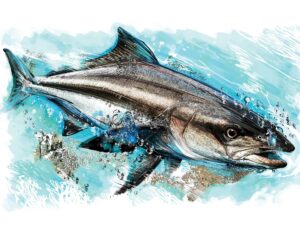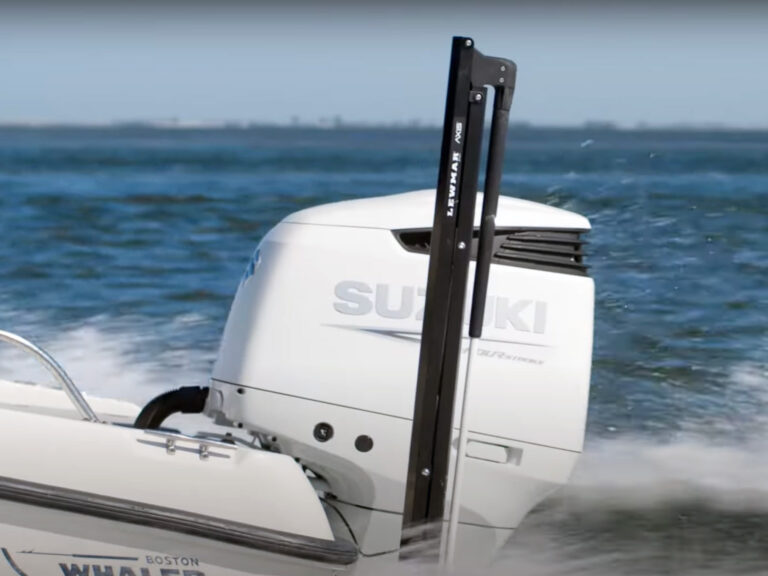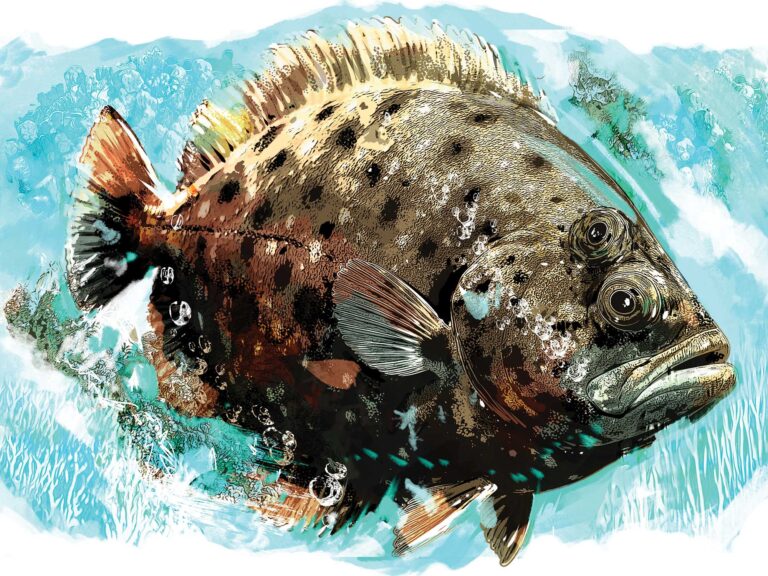
john graves
So you and your buddies spent all morning trolling 30 miles offshore and … finally! You not only hook but catch a marlin, a nice white. That certainly merits some photos, so the four of you work together to hoist the fish into the cockpit. Three of you hold it up, the victorious hoots and hollers evident in the photos. Then one of the three switches positions with the photographer, so no one is left out. You take a few more photos to be sure, then put the marlin over the side.
It was out of the water, what? Maybe three minutes. And it’s still swimming, so no harm done.
Or was there?
That three-word question is the basis for a proposed study using pop-up satellite tags (PSATs) of post-release mortality in white marlin by John Graves, professor of marine science at Virginia Institute of Marine Science and one of the world’s leading experts on billfishes.
His study would quantify the effects of something termed air exposure, which is just as it sounds — how the length of time a billfish is in the air (as, for instance, in a boat’s cockpit) versus in the water affects its subsequent chances for survival.
Going back to my hypothetical incident above, I wonder how many readers’ first thought was: Those guys are breaking the law.
Indeed they would be since it is illegal to remove marlin from the water unless one is going to keep them (which is legal only within narrow parameters, and which is something that, fortunately, very few anglers in Atlantic waters ever do these days).
So why the need for a study that is likely to prove the harm of doing what is already illegal?
That, says Graves, is precisely the point. Most anglers feel it is okay to get some “hero shots” of a marlin or sailfish in the boat, and then release it. I would guess some combination of seeing little harm in doing so, plus the fact that a law insisting billfish remain in the water is hard to enforce on the open ocean, accounts for just how widespread is the act of bringing billfish into a boat.
Graves maintains that anglers have by and large proven they are conservationists and want whatever is best for the billfish they so like to target, and so prize. Case in point: Their ready and ubiquitous adoption of circle-hook use once that was shown to be a major factor in the survival of released billfish.
In the same way, the scientist feels, if they had quantifiable and quantified proof, anglers would, as word spread, stop removing billfish from the water for photos.
In fact, Graves — via a study by his VIMS graduate student, Lela Schlenker — already has evidence suggesting strongly that billfish do suffer increased mortality when removed from the water. That’s not entirely surprising, since it’s already known that removing a fish from water can result in specific, adverse physiological changes.
However more directed study with a larger sample size, and considering varying times in the air, is necessary to draw definitive conclusions (conclusions of the sort many anglers would probably require to alter their behavior in this regard).
Unfortunately, studying billfish survival is neither easy nor cheap. PSATs run around four grand per, so serious funding is necessary.
Given the importance of billfish to coastal economies — even of a single species, such as white marlin, to the midAltantic states — Graves is submitting his proposal to the National Marine Fisheries Service’s Saltonstall Kennedy Grant****Program.
I believe it would prove a vital study, one that could alter anglers’ behavior far and wide and ultimately save the lives of thousands of billfishes — and I hope the good folks managing the Saltonstall Kennedy Program help make it happen.








